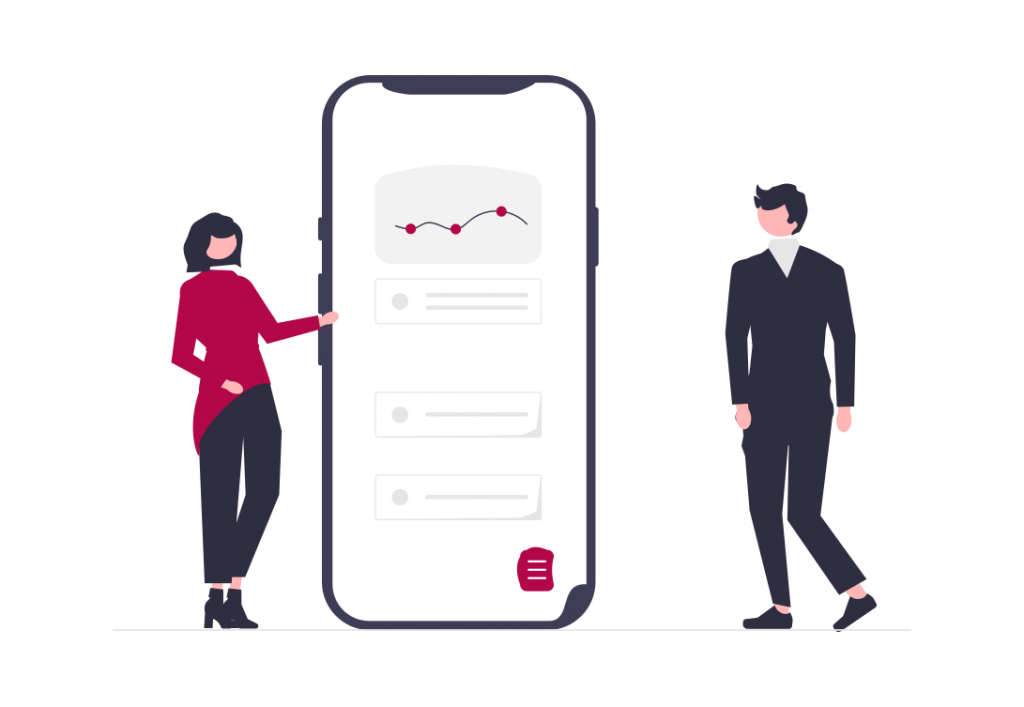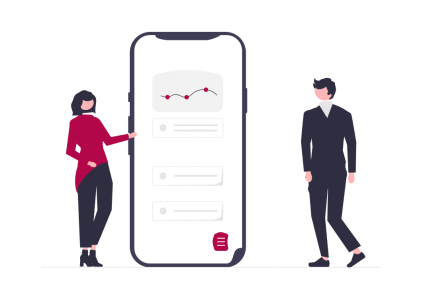- Steps for Success: Crowdfunding Your Business
- Steps for Success: Brand Yourself
- Steps for Success: Small Business Cash Flow
- Steps for Success: Business Cyber Security
- Steps for Success: Freelance Business Startup Tips
- STEP 1: DO YOUR RESEARCH ON CROWDFUNDING
- STEP 2: HAVE A BUSINESS PLAN
- STEP 3: OFFER VALUE
- STEP 4: BUILD AN AUDIENCE
- STEP 5: TELL A STORY
- STEP 6: DECIDE ON YOUR CROWDFUNDING TYPE
- STEP 7: PICK THE RIGHT PLATFORM
- STEP 8: CREATE AN EFFECTIVE CAMPAIGN
- STEP 9: DESIGN AN APPEALING CROWDFUNDING PAGE
- STEP 10: REACH OUT TO POTENTIAL INVESTORS

One of the toughest challenges that entrepreneurs face is raising enough capital to launch and keep their businesses going. You could apply for a bank loan, but be prepared to wait many months to be approved or denied depending on your personal credit score & collateral.
But it doesn’t have to be that way. You can crowdfund your project and receive small donations or investments from a large number of people. Many businesses have done it and continue to do it. Some have raised over hundreds of thousands through crowdfunding. You can too!
STEP 1: DO YOUR RESEARCH ON CROWDFUNDING
This is by far one of the most important steps. You have to know how crowdfunding works. The rules, steps involved, as well as requirements. This will help you accelerate results and meet your goals. So, get that out of the way and then move on to the equally important step; identifying your audience.
- Is there market demand for your idea, product, or service?
- Do people want what you are offering?
- Will they be willing to fund it?
You can do a quick Google search for statistics or ask your existing followers, subscribers, etc. if they may be interested in your new venture. Post on your blog, site, and social pages. Ask them to share their opinions and leave comments.
Remember to use convincing language. You want people to know that you are passionate about what you do and that you value and care about it. Tell them what they stand to benefit. Explain clearly what your main purpose is, why you need donations, how your new project is going to help people, and so on. This will help you attract more donors and investors because people are more comfortable channeling their money toward a good cause or something they understand.
STEP 2: HAVE A BUSINESS PLAN
Next, create a business plan. Show sponsors that you have a long-term plan for your new venture. No one wants to throw away their money or put it in something that isn’t going to last. So, include short-term as well as long-term goals. Mention where you see the business in 3, 5, and 10 years.
Answer the following questions:
- How much money do you need to keep everything in check?
- What amount do you intend to raise?
- What are your projected monthly, yearly, and overall profits?
Use your business plan to attract the right investors and donors. Show them you have a full-proof plan to ensure success.
You can also include a prototype of your final product or service. Create an MVP to help people familiarize themselves with it or motivate them to take part. Give them access to unique features or highlight them to stand apart and pique interest.
STEP 3: OFFER VALUE
Show sponsors how you are different from the competition. You want them to realize that you are not just another entrepreneur looking to get their business to the world. You are different. You care about your audience and what they stand to benefit from your project. So, offer value. Know your competition and offer something that they don’t. Know what sets you apart and mention it in your marketing campaign.
The key thing to remember when deciding on your value proposition is what funders or investors stand to benefit from your venture. What’s in it for them? Why would they want to get involved? If you answer these questions, you will easily persuade them to take part.
You can offer rewards for better involvement. Give early access, branded t-shirts, or exclusive content to sponsors. This is how you express your gratitude and show them how much they are valued.
When you promise to give rewards, do precisely that. Keep your promises. Don’t make excuses. That is how you build trust and loyalty. Your word is your bond and you are judged by how true you are to your words. So, either make promises you can keep or don’t make them at all.
STEP 4: BUILD AN AUDIENCE
One mistake that business owners make when looking for funds is jumping right into it without first forming meaningful relationships or building an audience. So, don’t make the same mistake. Have an audience first, and then start your campaign. This will greatly speed up the process and guarantee results.
Identify your audience and have a strong online presence. Build authority around your niche and connect with like-minded people. Join social networks and relevant groups. Be an active member. Share, like, and comment on other people’s posts. Create a Facebook business page, LinkedIn page, Twitter account, or YouTube channel to attract the right people, grow your audience, and form lasting relationships.
Come up with an effective content strategy and use it to gain followers. Offer valuable advice and useful resources to boost traffic and retain attention. Share content that your audience wants, enjoys, and needs. The kind that keeps them coming back and hitting the ‘Share’ button.
Once people value and trust your advice, you can easily talk about your new venture, ask for donations and get them. This is because you would have already formed worthwhile relations and convinced them that you value and appreciate their presence.
STEP 5: TELL A STORY
Once you build an audience, start your crowdfunding campaign. Get the public invested in what you do through storytelling. Tell your story. Make sure it’s unique, true, and worth their attention. You can use Instagram stories to help them understand your new venture, pique their interest, and inspire action.
The best way to succeed is to include solutions to existing problems in your storytelling. Identify a problem and offer a practical solution. Show them how your business is going to solve that specific problem. Explain how their donations are going to help make someone else’s life easier or help them meet their goals.
If you clearly define the solution you will raise enough money to execute your idea and bring it to life.
STEP 6: DECIDE ON YOUR CROWDFUNDING TYPE
Decide on the type of crowdfunding campaign to use. Are you going with rewards, debt, equity, or donations type crowdfunding? Your choice can depend on your business type, needs, or flexibility. You can also just go with the one you prefer.
Rewards crowdfunding is where you offer rewards such as discounts, freebies, and so on to backers. Inspire them to connect to your cause by giving them something that they’ll be interested in or something they’ll remember you by.
Equity crowdfunding is where investors become shareholders or get company shares depending on the amount of money they invest. You can go with this option if you are willing to share ownership of your company.
If not, use donations crowdfunding which allows people to fund your project without expecting anything in return. You just have to be creative enough to grab their attention and encourage them to give. Use content marketing to form meaningful relations and get them to invest in your project.
STEP 7: PICK THE RIGHT PLATFORM
Next, choose the right platform to work with. There are countless options to pick from but we will only cover the best; Indiegogo, Patreon, Kickstarter, GoFundMe, and Fundable.
Indiegogo is a rewards-based platform that has enabled countless business owners to successfully raise funds and meet their goals. The best part is that you can channel all the money you raise into your venture. You are only charged a 5 % platform fee for all projects.
Patreon is also rewards-based and can be used by anyone who can offer constant rewards to subscribers. It comes with different account types that subscribers can select from. Inspire action and encourage participation by offering exclusive rewards such as behind-the-scenes content and so forth. Charges vary depending on the selected package. Each package comes with additional processing and transaction fees.
Kickstarter is a rewards and donations platform which has helped business owners raise over $3 billion to fund over 140 000 projects. This is by far the best and most popular platform with millions of monthly visitors. Use it to reach a bigger audience and for a successful campaign. The only downside is that if you don’t meet your goal, the money you raise gets returned to sponsors. So, make sure you meet the set goal within the specified time frame. Create your project for free and only pay a 5 % processing fee.
GoFundMe is a donation-based platform and is ideal for non-profits. You can raise millions of dollars for a single project if you get your pitch right and create an effective campaign strategy. You can meet personal fundraising needs, raise money for healthcare expenses, or grow your business. It comes with a great support system and has a 0 % platform fee.
Fundable is an equity-based platform that has generated over $600 million in funding. You have the flexibility to either offer equity or rewards to investors or donors. Attract more investors and get your business to the next level. The platform also comes with great customer support just in case you have questions or run into problems. You can set up your profile for free and then pay a $179 monthly fee plus processing fees for each successful transaction.
Other great platforms to look into include; Fundly, CircleUp, Seedrs, WeFunder, and CrowdFunder.
Most of the mentioned platforms support integrations and offer an easy way to quickly set up your page and start your campaign.
STEP 8: CREATE AN EFFECTIVE CAMPAIGN
Your success depends on your marketing efforts. So, come up with an effective strategy that will help you meet your goal and ensure results. Use social media, podcasts, your website, blog, or YouTube channel to boost engagement and raise interest. You can also build an email list and have followers, as well as first-time visitors, sign up for your emails.
Use videos to promote your campaign. Get your audience to connect with your business by posting product images or behind-the-scenes videos. Share images of your team members or 5-minute recordings of recent updates and developments. Keep them interested and looking forward to what you will share next.
Partner up with influencers or marketing experts and ask them to mention your campaign to their followers. Don’t forget to mention what they will benefit from partnering up with you.
Learn from the competition. Identify successful campaigns, find out what sets them apart, and incorporate some of their methods into your strategy.
You can also reach out to individuals who have succeeded in raising funds for their business ventures and ask for advice. This works best if you have an existing connection with them or have formed worthwhile relations. However, if you haven’t, you can still make it work. Get them to notice you by interacting with their content and becoming an active business community member. Follow their business pages and subscribe to YouTube channels.
Like, share, and comment on posts. Ask constructive and notable questions. Share valuable information or leave helpful comments. The key thing is to raise interest, get noticed, prove you are passionate about certain subjects in your niche and command their attention. This will make it easier for them to support your cause once you ask for funding.
Ask for donations when you build a following or get a decent number of email subscribers. By then you would have already formed meaningful relations and proven you value your audience’s success and development through your content. You can also use ads to advertise your new venture and pique interest.
STEP 9: DESIGN AN APPEALING CROWDFUNDING PAGE
Next, create your campaign page. Use compelling language to capture attention, retain it, and encourage people to give. Pick a title that clearly describes your project and helps investors easily understand your product or venture. Include your product name and briefly explain what it is.
Your description should be short, appealing, and straight to the point. Highlight the unique features of your product, its benefits, as well as what sets it apart from the competition. Talk about how the money will be used as well as where it will go. Help backers easily and quickly understand your intentions as well as why you need funding.
When you get the attention you need, make sure you keep your page updated. Ensure donors stay up-to-date by uploading new posts. Share your progress and important information such as how far you have gone since the initial setup. For example, how much money you have raised? How many people are involved in the process? and are there any latest updates?
Upload new images, videos, and so on to keep your page looking fresh and up-to-date.
STEP 10: REACH OUT TO POTENTIAL INVESTORS
Get more funding by reaching out to potential investors or people who show a keen interest in what you are doing. You can talk to your existing community such as your friends, colleagues, or family. Advertise to Facebook group members, for example. Mention your new venture, main goal, the problem you want to solve, solutions you want to offer, and how their involvement will play a major role in helping you meet your goal.
You can also identify investors who have invested in businesses or projects similar to yours and pitch to them. Your crowdfunding platform can help you to easily identify accredited investors. Find out what sort of campaigns they have shown interest in, what projects they have funded in the past, and work on your pitch.
You can either create a video pitch or a written one. It depends on the platform you choose. Use clear and persuasive language. Include important details such as your goal, problems that your project will solve, its uniqueness, how donations will assist, and so forth.
Raise interest by telling a compelling story. Get investors to connect with your venture at a personal level. Talk about your journey. For example, how your business started, what you have accomplished, where you’ve been, challenges met along the way, as well as where you intend to be.
Countless people are using crowdfunding to see their projects off the ground and take their businesses to the next level. You can too! If you use the above-mentioned tips to advertise your venture, build an audience, and run a successful campaign, you will meet your goals.
If you do it right, you can get more people invested in the process, raise more money than you expect, and go beyond your projections.
When choosing your crowdfunding platform, pay attention to the most important details. Such as costs involved and payment methods. Pick a platform that offers multiple methods of payment and decide whether or not you want immediate access to your funds or are willing to wait until the campaign is over. This is because some platforms only give you access to your funds when your campaign is over. Select a platform that gives you the flexibility you need.
Also, go with one that gives you more options, doesn’t limit you, and has more than one crowdfunding type.


